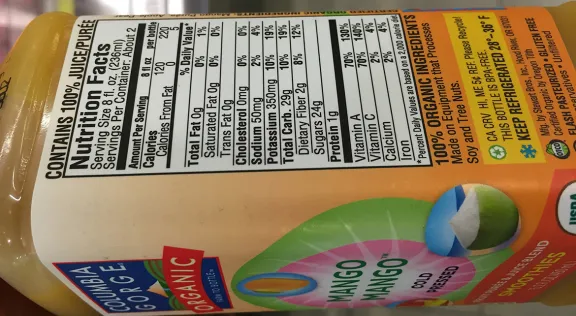
Is Banning Sugary Drinks Worthwhile?
“Here’s something wholesome and delicious for you to enjoy,” a smiling nurse says in a vintage Coca-Cola magazine ad. “Coca-Cola is served as a beverage in leading hospitals,” boasts another ad from the same period.
How times have changed.
Today, ads like those would seem almost criminal, with Coca-Cola and other leading manufacturers of sugar-sweetened sodas now standing in as the de facto corporate face of America’s burgeoning obesity and diabetes epidemics. UCSF has supported groundbreaking research on sugar’s health impacts, and more recently has been turning that science into policy action.
Earlier this year, UCSF administration began the unprecedented process of phasing out the sale of sugary beverages campus-wide. Thanks to the UCSF Healthy Beverages Initiative, grabbing a Coke or Gatorade from the shelves of campus cafeterias is now a thing of the past.
Though a ban on an entire category of beverages might seem extreme, desperate times call for desperate measures. Nearly 30 million Americans have diabetes — just one of the many adverse health outcomes associated with high dietary sugar intake — a disease that costs the U.S. nearly a quarter trillion dollars annually in medical costs and lost productivity.
However, there are still those who question the necessity and merit of a whole-campus ban on sugary sodas and other potentially unhealthy drinks. Grab a bottle of water — or maybe a diet drink — and read on as we explore the justification behind the Healthy Beverages Initiative and some of the arguments that have been levied against it.
Arguments in Favor:
Over the past two decades, the explosion of non-communicable chronic diseases like obesity and diabetes has had a profound impact on the entire U.S. healthcare system. The rise of processed food, increased portion sizes, and more sedentary lifestyles are largely to blame.
Nutrition science, which persistently does not receive sufficient funding, has struggled to find the best way to address the issue. In the second half of the 20th century, cardiovascular research vilified dietary fat, but the “low-fat” products that consumers resultantly flocked to were often packed with added sugar.
From 1965 to 2011, carbohydrates’ contribution to Americans’ total caloric intake grew from 39% to 51% (according to NHANES data), with a large portion of those carbohydrates coming from processed sources.
But why does that matter?
It turns out that excess sugar consumption is not just expanding Americans’ waistlines: it is actively causing disease.
A wave of research strongly supports the theory that excessive sugar consumption overloads our body’s capacity to process and store it, damaging organs and causing diabetes, heart disease, liver disease, and other chronic conditions. An excellent overview of the science in this area can be found at UCSF’s SugarScience website.
As with many public health issues, the brunt of the health impacts of sugar sweetened beverages are borne by more socioeconomically disadvantaged portions of the population.
Part of what makes beverages with added sugar so dangerous is that they are so cheap. An 800-calorie two-liter bottle of Coca-Cola can cost as little as $1.
To make matters worse, manufacturers of sugary drinks are funding misleading science that aims to downplay the effect of dietary sugar on health.
It is the combined danger and ubiquity of sugar sweetened beverages that ultimately prompted UCSF to act in the way that it did. Encouragingly, preliminary data suggests that the Healthy Beverage Initiative is working.
Among an interim sample from a larger ongoing study, UCSF employees are consuming eight fewer ounces of sugary beverages per week following the removal of sugary drinks from campus markets.
There are limits to the interpretation of these interim results, but at least for now there are signs that the Healthy Beverages Initiative is having a concrete positive impact on the UCSF community.
Arguments Against:
It’s impossible to deny that the U.S. is facing an unprecedented epidemic of chronic metabolic disease, but the design of public policy interventions must also consider alternative choices and the potential for unintended consequences.
The argument in favor of the Healthy Beverages Initiative focuses on the beverages that are being removed from shelves, but what about the ones that remain?
Consider that one 16-ounce bottle of a 100% mango juice that can be found in the Moffitt Cafeteria has 48 grams of sugar, slightly more than a similarly sized bottle of Coca-Cola contains.
Another concern is the potential risks of artificial sweeteners in diet drinks, which are also permitted under the initiative. There exist plausible theories that artificial sweeteners may wreak havoc on the symbiotic microbes that live in our gut. Our “gut microbiome,” as it is referred to, is vital in processing nutrients that our body cannot.
A preclinical study published last year in the journal Nature found that commonly used non-caloric artificial sweeteners led to increased glucose intolerance — a step on the cascade towards diabetes — through changes in the composition of the gut microbiome.
While this represents early-stage work, we must remember that the body of literature on the health effects of artificial sweeteners remains relatively meager.
Enforceability is another unanswered question in the debate over the Healthy Beverages Initiative. An unnamed vendor on Parnassus Avenue has voiced plans to continue offering sugary beverages for sale.
Though students filed a petition in protest, UCSF rules do not formally apply to street vendors. The Healthy Beverage Initiative may simply drive business away from on-campus eateries, given the popularity of many sugary drinks.
Finally, one could argue that influencing behavior by restricting choices represents a missed opportunity for patient education.
The interim study on the Healthy Beverages Initiative demonstrated that the majority of sugar-laden drinks are consumed at home, not at work. A ban reduces the availability of sugary drinks on campus but may increase consumption at home; effective education, on the other hand, has the potential to decrease consumption across the board.
Medical practice is making great strides to move away from the paternalistic model of the past, focusing more on collaboratively solving problems within the context of patients’ existing preferences rather than criticizing or changing those preferences.
Not only does a partnered approach improve patients’ understanding of their own health, but it also instills more patient trust in the medical establishment.
Achieving desired results by restricting patient options may not have the same positive impression on patients.
The upshot:
Ultimately, the Healthy Beverages Initiative represents a major public health victory for UCSF, its employees, and its patients. In the face of a daunting chronic disease epidemic and the “obeso-genic” environment that sustains it, the removal of sugary beverages from shelves represents the sort of drastic action that is so desperately needed.
It is very possible that other hospital systems may follow UCSF’s lead in the years to come, hopefully setting an example for other venues like schools where sugary drinks are available to vulnerable populations.
Some may construe the Healthy Beverages Initiative’s victory, however, as a step too far. The campus reaction — including on the UCSF Facebook group — was not unanimously positive, with some protesting the restriction of choice.
Even though the Healthy Beverages Initiative was a positive step from a population health perspective, its implementation does not reduce the need for us to continue arming patients with knowledge and helping them become better stewards of their own health.
Given the scope of the challenge at hand, it will likely take a full-court press involving education and changes in incentives, in addition to more forceful policies like the Healthy Beverage Initiative, to reverse the trend of diabetes, obesity, and other chronic diseases in the U.S.


